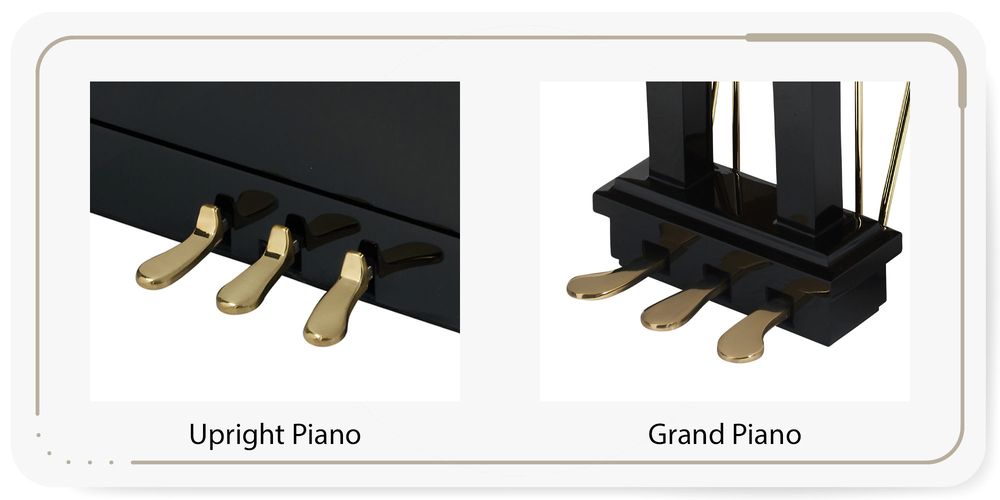4. Differences Between an Upright and Grand Piano
Similarities between the two instruments:
Of course neither instrument is made up of strings and mechanics alone. The surface of the strings is too slender to produce enough pressure for sound (sound comes from changes in air pressure). Which is why both types of pianos have a soundboard. Other similarities are:
- the post to which the cast-iron plate is screwed
- the tuning pegs embedded in the pin block for tensioning the strings
- a housing with beam construction and wooden struts
A note on the the cast-iron plate: it has to undergo a rather complex manufacturing process before it can be installed (filling, pre-painting, varnishing, bronzing and hardening repeatedly in the oven). It determines the position of the strings and is therefore precisely adjusted during installation.
A closer look at pedals:
You're probably wondering why pedals weren't listed as one of the things both types have in common, of course both instruments have pedals, but they don't always have the same functions.
a) Functions of the pedals on an upright piano:
Left Pedal - The Piano Pedal
When activated the hammers are brought closer to the strings. As a result the force of the hammers when they strike the strings is reduced significantly, which allows you to play very quietly.
Middle Pedal - The Moderator Pedal (not available on all models)
When pressed, a felt strip is pushed between the hammers and the strings, which makes the instrument much quieter.
Right Pedal - Sustain Pedal
It causes all dampers to be lifted off the strings. As a result, any struck string continues to vibrate after releasing the key. In addition, other strings that were not struck directly vibrate, creating a much fuller sound.
b) Functions of the pedals on a grand piano:
Left Pedal - The Soft Pedal
This pedal shifts the entire keyboard to the right with the help of the mechanics. This means that the hammers no longer hit every string of the chorus, rather they hit only one, which is why the pedal is also called una corda ("a string").
In addition, the displacement causes other parts of the hammer felt to hit the strings, which some manufacturers take advantage of to achieve a modified sound using Intoniernadeln.
Middle Pedal - The Sostenuto Pedal
As already mentioned in the history section, this pedal was developed in 1874 by Theodor Steinway. It is used to hold individual notes that were struck at the time of pedal pressure. To do this, the dampers of the respective strings remain up, even after the key has been released.
Right Pedal - Sustain Pedal
It has the same effect as on the standard piano. But to reiterate, the dampers are removed from the strings allowing them to vibrate longer.



